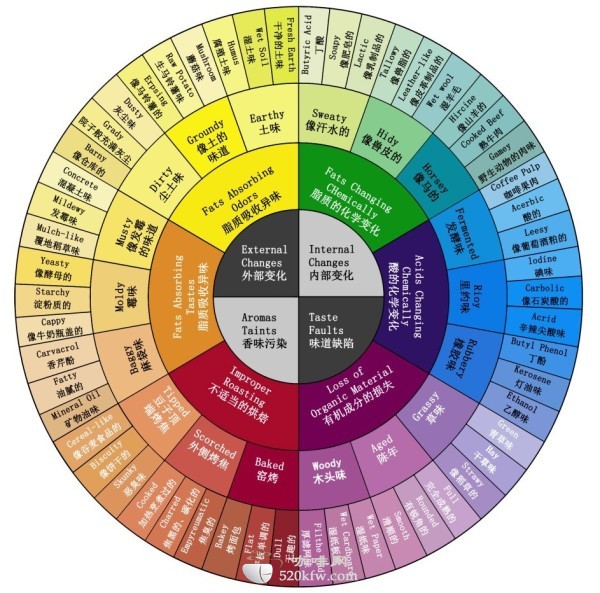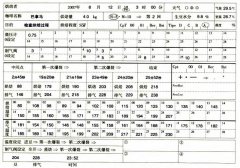General steps and principles of Common sense blending of Fine Coffee beans

General steps and principles of matching
Before matching, we should be clear about the following points:
1. The theme of matching
What kind of flavor you want to match, that is, to determine the goal of the match.
two。 Understand the characteristics of each coffee bean
To mix coffee, you must first be familiar with the characteristics of each individual coffee and understand the subtle relationship between roasting and coffee flavor, all of which can only be achieved by tasting the cup.
3. Determine the task of participating in the blending of coffee beans
Since a variety of coffee beans are used together, it is necessary to know whether the task of each kind of coffee beans is to make her show soft bitterness, distinct acidity or thick mellow taste, etc.
Generally speaking, the following principles should be followed when matching:
1. Blending of raw beans requires the use of coffee beans with their own characteristics, and avoid using coffee beans with similar flavor. The choice of raw beans can be considered from three aspects:
Raw bean treatment method: that is, whether raw beans are treated by washing method or drying method, which has a lot to do with the flavor of coffee beans.
Producing areas of raw beans: coffee producing areas are generally divided into three major regions, including about 20 countries in Central and South America, namely, Brazil, Colombia, Guatemala, Mexico, Delvado, Jamaica and Peru, and about 10 countries in Southeast Asia, namely India, Indonesia (including Java and Sumatra) and Papua New Guinea. About 25 countries in the Arab and African regions, namely, Ethiopia, Kenya, Tanzania, Arabia, Uganda and so on.
Coffee bean flavor: refers to the coffee bean flavor of sour, bitter, sweet, alcohol which is more prominent, or all aspects of more balanced neutral beans. Now the most commonly used raw beans are Brazil, Colombia and Mocha.
two。 The number and proportion of coffee beans involved in blending
Since it is a blending, it naturally refers to the blending of more than two kinds of raw beans, but a special example is that it can also match the same kind of coffee beans with different roasting degrees, or even the new crop and aged coffee or old crop of the same kind of coffee beans, so the type referred to in the blending is no longer a coffee variety in a narrow sense, but extends to the flavor of coffee in a broad sense. Generally use 2 to 6 kinds of coffee beans when blending, too many kinds will not be able to show the unique flavor of coffee. Blended coffee usually does not take the 1:1 blending ratio, because this may suppress each other's unique flavor, so the blending must be primary and secondary in order to produce a better taste than a single coffee. If you want the coffee to taste complex and changeable, you can reduce the proportion of raw beans, and vice versa.
3. Coffee blending depends on constant attempts, so a blending schedule should be drawn up mathematically before blending, and then the best plan should be determined through the process of blending-tasting cups. Don't think that this is a negative and stupid approach. In fact, a good cup of coffee can only be made by the experience, inspiration and tireless attempt of the blender.
Important Notice :
前街咖啡 FrontStreet Coffee has moved to new addredd:
FrontStreet Coffee Address: 315,Donghua East Road,GuangZhou
Tel:020 38364473
- Prev

High-quality coffee, common sense, mixing of coffee beans.
The ideal goal is, of course, to piece together a coffee that tastes better than any of them. But generally speaking, Arabica coffee from a single origin is enough to make coffee that tastes good for export; it has a delicate flavor, a soft taste and a sweet aftertaste. So there is no need to mix (that is, to combine coffee from different places). The main commercial purpose of blending coffee is to reduce it to
- Next

Coffee tasting methods and advantages and disadvantages of coffee cup testing
The significance of cup test is to evaluate and compare several different kinds of coffee at the same level. It is also an important course in coffee training and barista training. Next, let's explore the secret of coffee cup testing with Mr. Hu of Baitianhui Coffee training School. A cup test (Cup Testing) used to finally confirm the taste of coffee no matter how well you say it.
Related
- Beginners will see the "Coffee pull flower" guide!
- What is the difference between ice blog purified milk and ordinary milk coffee?
- Why is the Philippines the largest producer of crops in Liberia?
- For coffee extraction, should the fine powder be retained?
- How does extracted espresso fill pressed powder? How much strength does it take to press the powder?
- How to make jasmine cold extract coffee? Is the jasmine + latte good?
- Will this little toy really make the coffee taste better? How does Lily Drip affect coffee extraction?
- Will the action of slapping the filter cup also affect coffee extraction?
- What's the difference between powder-to-water ratio and powder-to-liquid ratio?
- What is the Ethiopian local species? What does it have to do with Heirloom native species?

